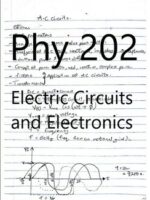This book is primarily intended to accompany an undergraduate course in atomic physics. It covers the core material and a selection of more advanced topics that illustrate current research in this field.
The first six chapters describe the basic principles of atomic structure, starting in Chapter 1 with a review of the classical ideas. Inevitably the discussion of the structure of hydrogen and helium in these early chapters has considerable overlap with introductory quantum mechanics courses, but an understanding of these simple systems provides the basis for the treatment of more complex atoms in later chapters.
Chapter 7 on the interaction of radiation with atoms marks the transition between the earlier chapters on structure and the second half of the book which covers laser spectroscopy, laser cooling, Bose–Einstein condensation of dilute atomic vapors, matter-wave interferometry and ion trapping.
The exciting new developments in laser cooling and trapping of atoms and Bose–Einstein condensation led to Nobel prizes in 1997 and 2001, respectively. Some of the other selected topics show the incredible precision that has been achieved by measurements in atomic physics experiments.
This theme is taken up in the final chapter that looks at quantum information processing from an atomic physics perspective; the techniques developed for precision measurements on atoms and ions give exquisite control over these quantum systems and enable elegant new ideas from quantum computation to be implemented.
The book assumes a knowledge of quantum mechanics equivalent to an introductory university course, e.g., the solution of the Schrodinger equation in three dimensions and perturbation theory.
This initial knowledge will be reinforced by many examples in this book; topics generally regarded as difficult at the undergraduate level are explained in some detail, e.g., degenerate perturbation theory.
The hierarchical structure of atoms is well described by perturbation theory since the different layers of structure within atoms have considerably different energies associated with them, and this is reflected in the names of the gross, fine and hyperfine structures.
In the early chapters of this book, atomic physics may appear to be simply applied quantum mechanics, i.e., we write down the Hamiltonian for a given interaction and solve the Schrodinger equation with suitable approximations.
I hope that the study of the more advanced material in the later chapters will lead to a more mature and deeper understanding of atomic physics. Throughout this book the experimental basis of atomic physics is emphasized, and it is hoped that the reader will gain some factual knowledge of atomic spectra.









Be the first to review “Atomic Physics”